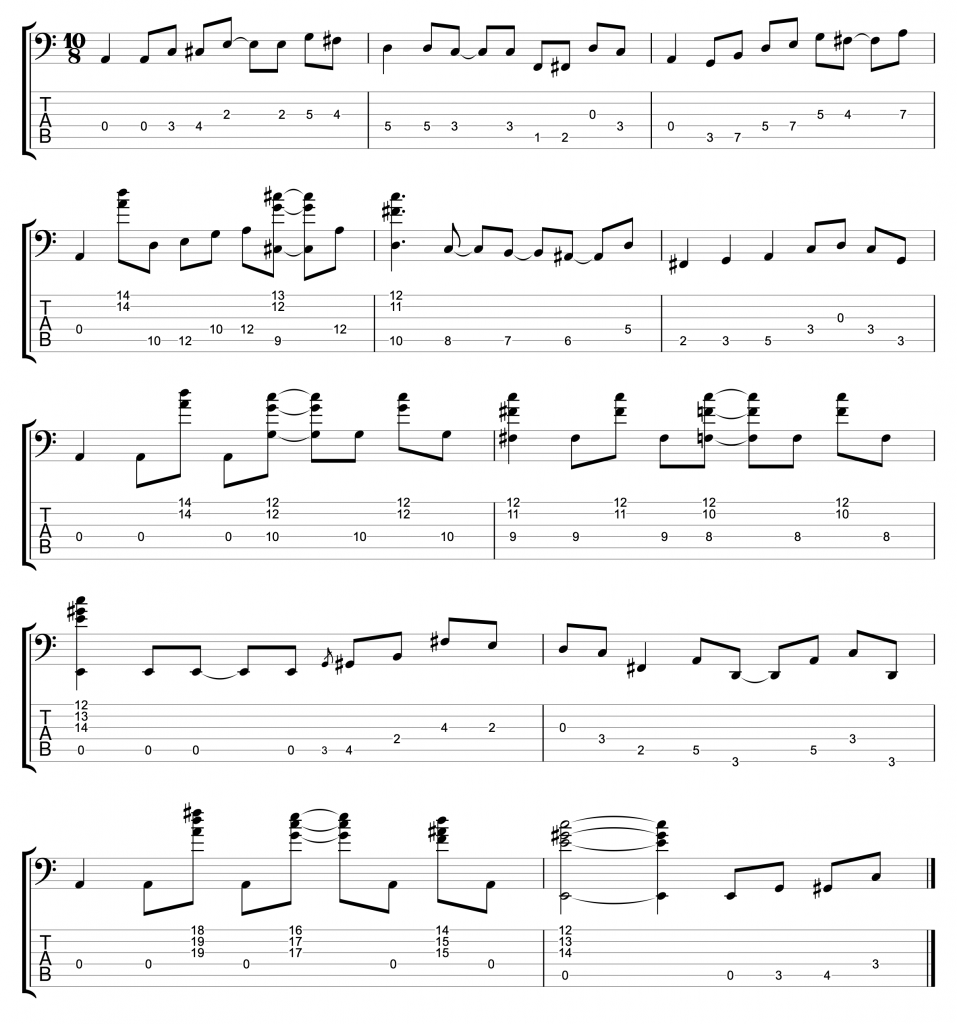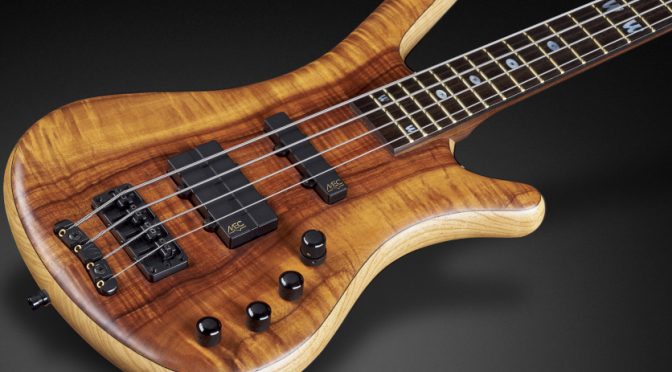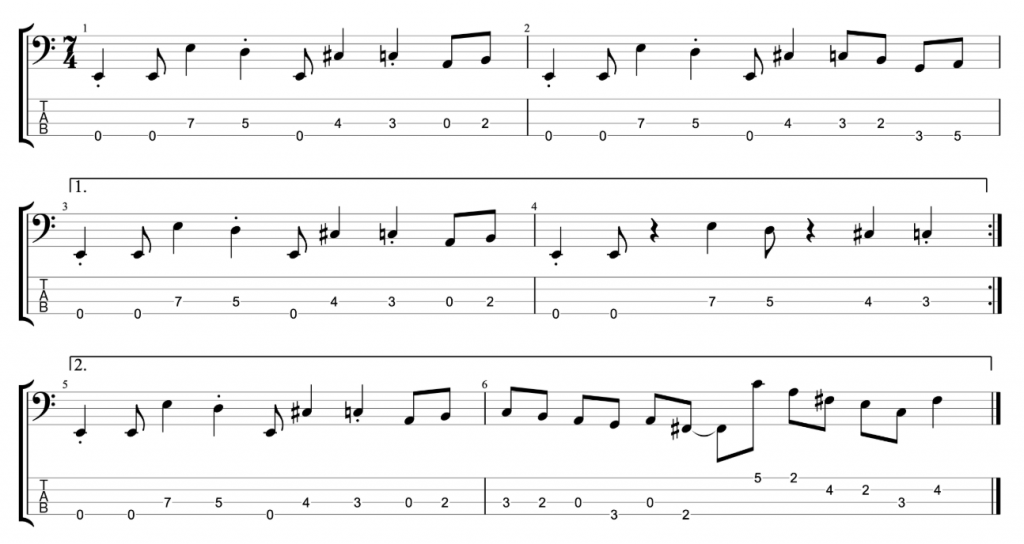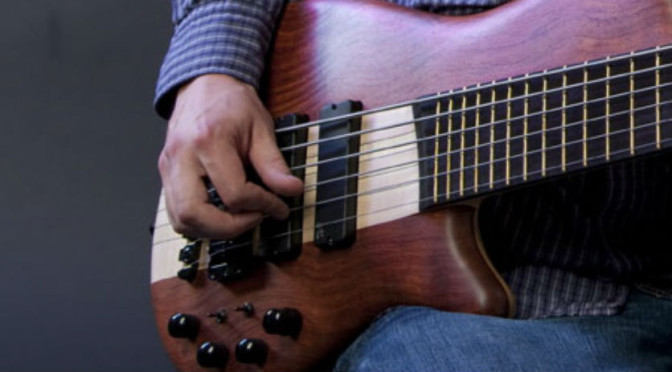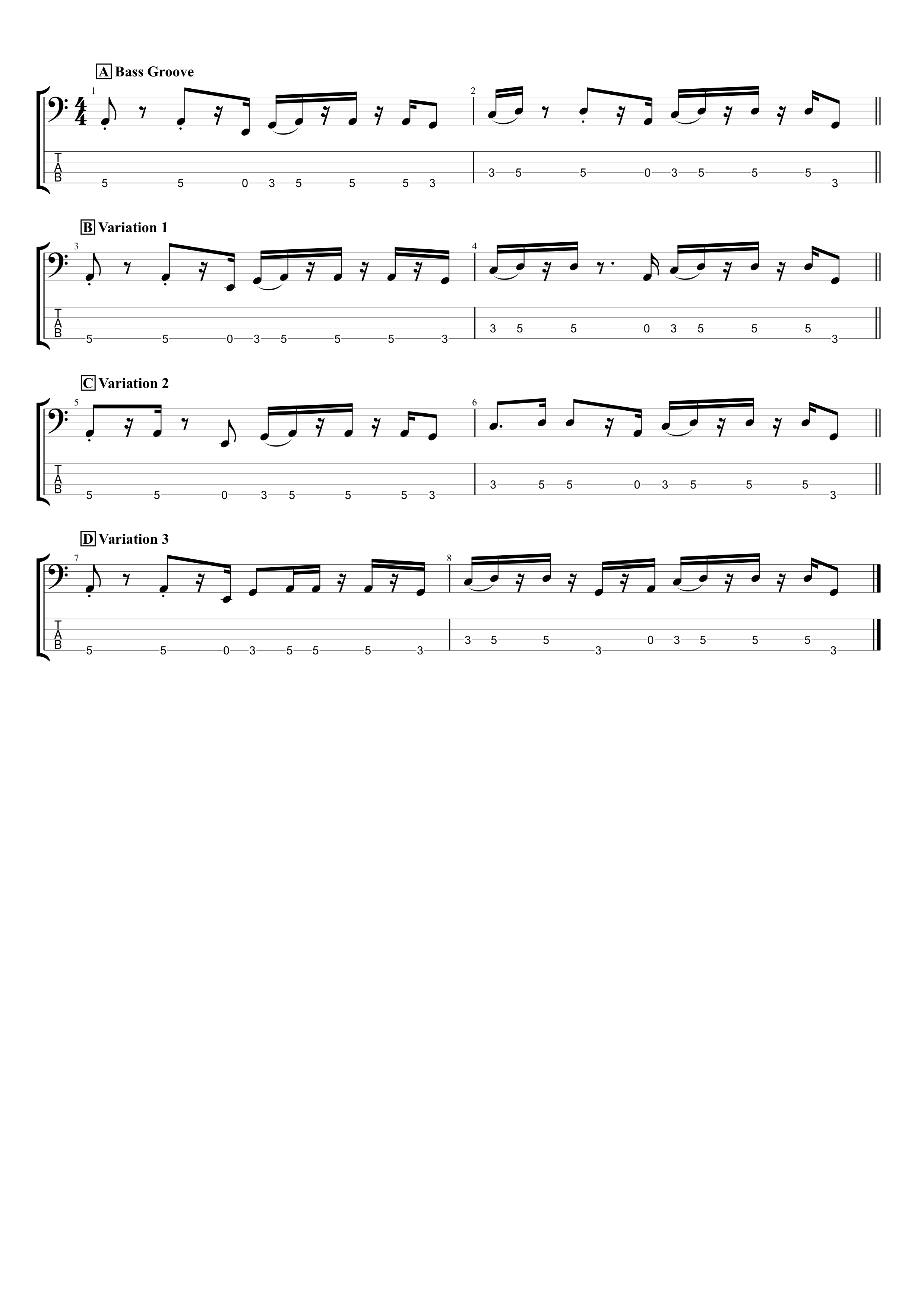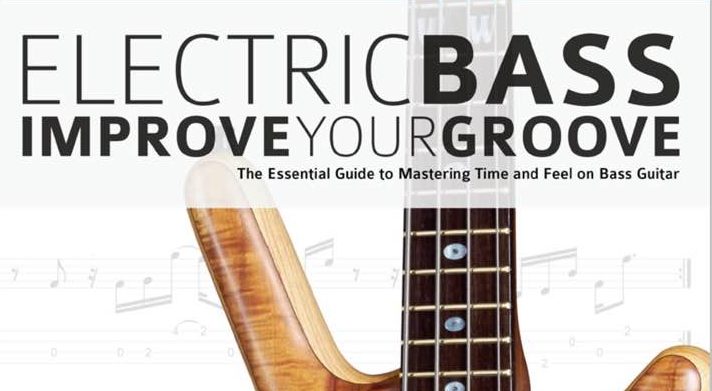Six Eight Bass Grooves – Learn Four Bass Lines in 6/8 Time Signature – Bass Practice Diary – 8 June 2021
I did a video in 2018 about playing bass in 6/8 time signature. It turned out to be a much more popular video than I was expecting. It currently has nearly 25,000 views on YouTube and I wasn’t expecting more than a few hundred. As I mentioned in that video, I love to groove in 6/8. It’s amazing how much music you can make with just six 1/8th notes in a bar. And I felt it was time to add to the content of that video by featuring some of my own, previously unreleased bass lines in six eight.
Bass Groove Number 1

As I mentioned in the video, if you want to unlock the full potential of six eight, then try not to think of it as a shuffle feel. If you think of the six 1/8th notes as two ta-ki-ta’s, then the shuffle feel is what you get if you only play on the ta syllables and ignore the other syllable, ki. If you treat the ki subdivisions as being just as important as the ta syllables then it unlocks a whole world of new bass lines and rhythms.
This bass line, written above, is an example of a groove that is starting to explore the ki syllable. Bars 1 &3 are a straight forward shuffle rhythm using only the ta’s. However, bars 2 & 4 both emphasise one of the ki syllables. Just that alone immediately takes this groove somewhere else and prevents it from sounding like a basic shuffle.
Bass Groove Number 2

This is a bass line that I have featured in a previous video. The other three are previously unreleased. I like this one because it demonstrates the idea of superimposing a straight 3/4 feel onto 6/8. Bars 1 & 3 look like a bar of 3/4 played on the beat. And bar two looks like you’re hitting all the off-beats in a bar of 3/4. But because the drums are playing 6/8, the feel is entirely different to 3/4. The final bar is a more conventional 6/8 feel, but I’m still hitting the ki syllable. I really like this bass groove, which is why I’m featuring it for a second time.
Bass Grooves Number 3 & 4

The grooves in this video get gradually more complex as we go along. Examples 3 & 4 are both quite hard to play. Both involve string skipping. You can use any technique you want when you play them, but I find it much easier to play the string skipping if I use my right hand thumb to play the notes on the E and A strings and my fingers to play the notes on the D and G strings.




